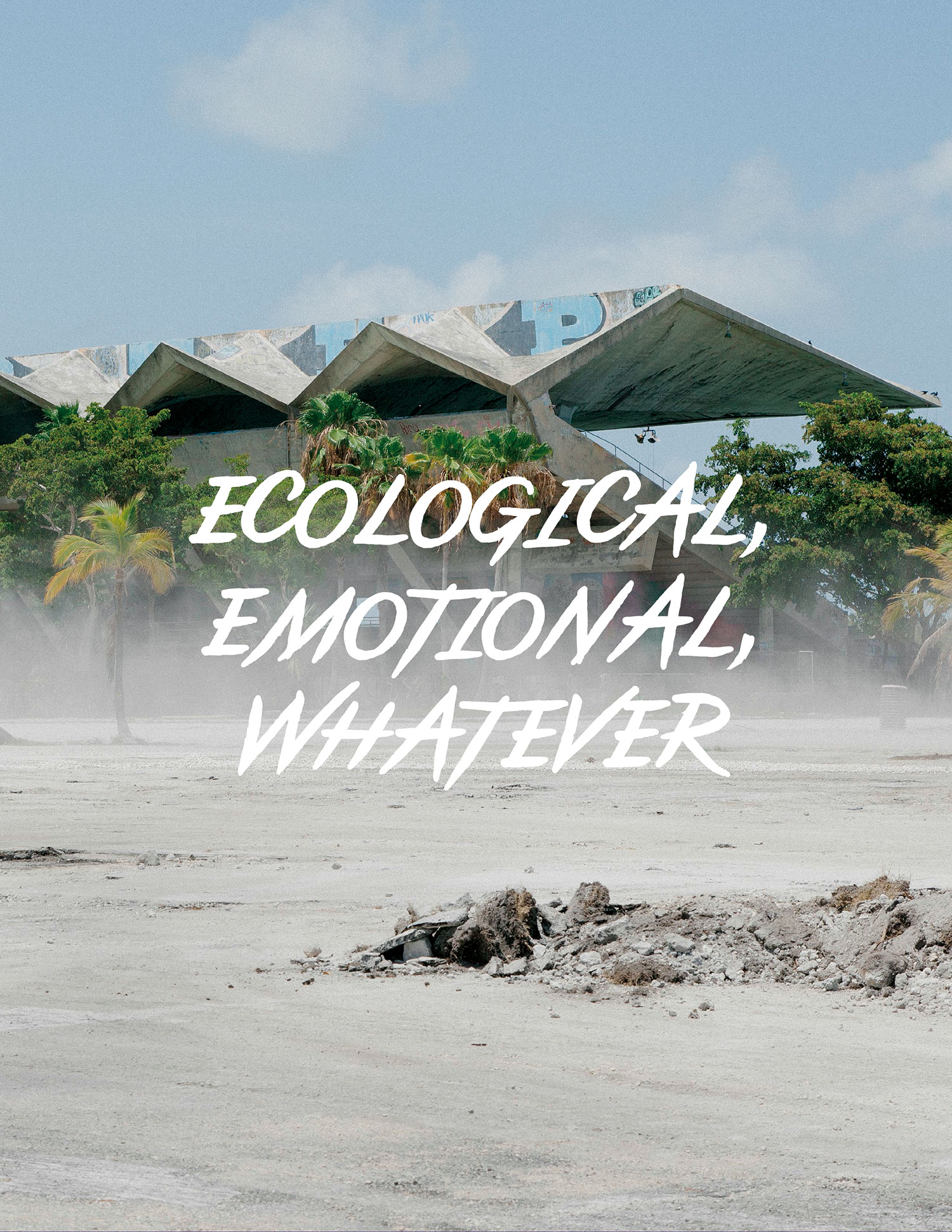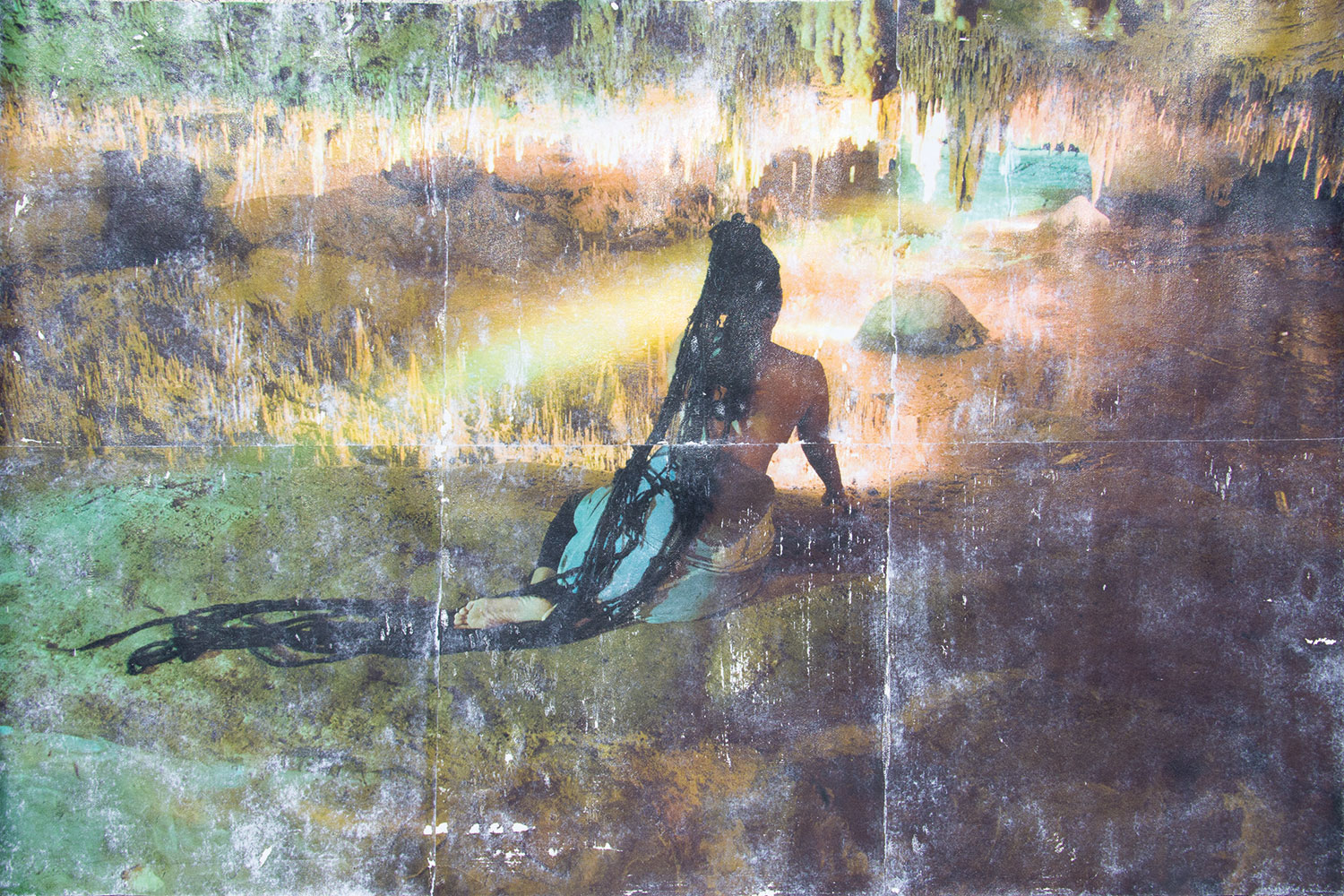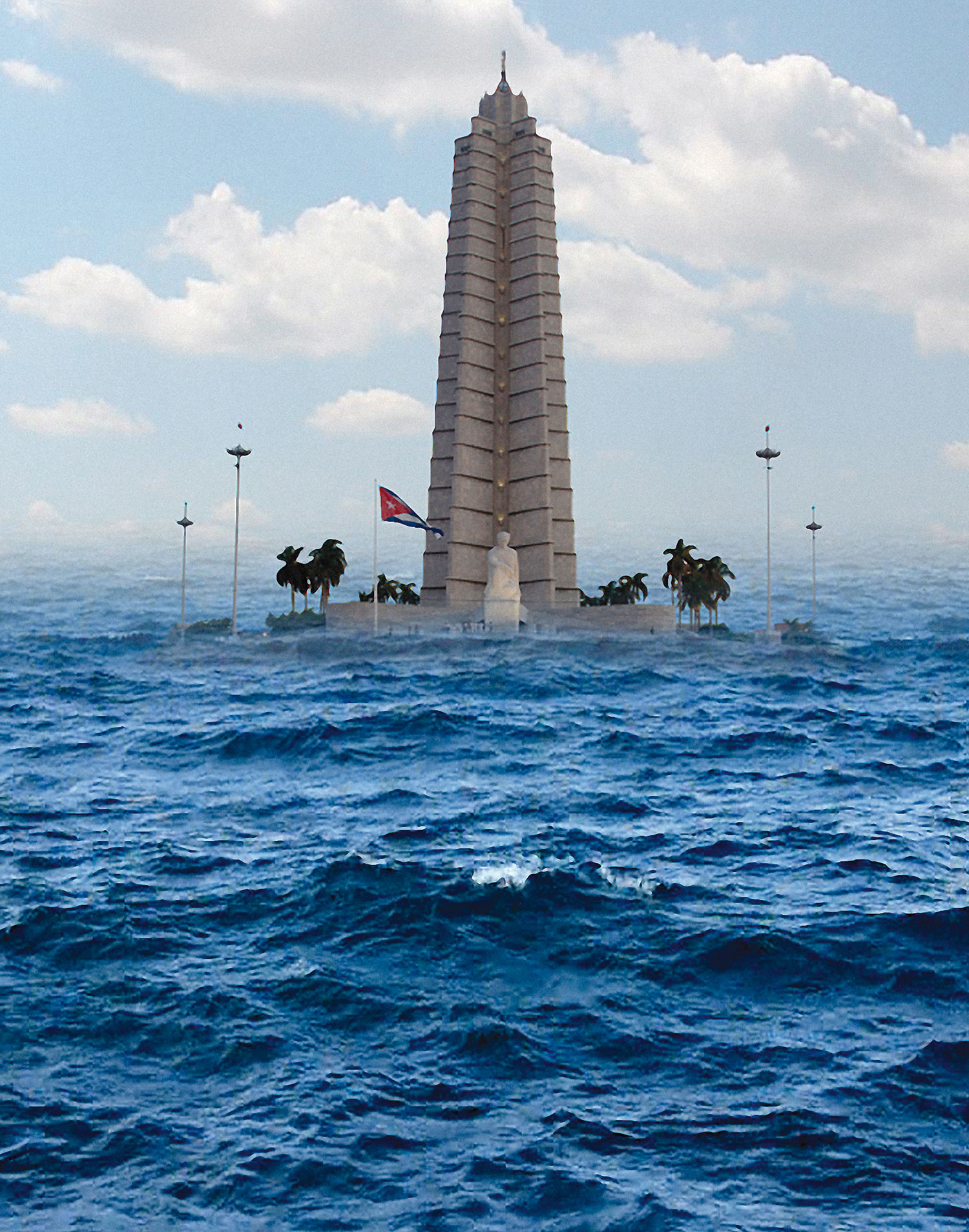
Why show the land? The question came to me as I exited “The Idea of North,” the Hammer Museum’s exhibition of landscapes by Canadian painter Lawren Harris (1885–1970). In the glare of Los Angeles it was hard to reconcile the vibrant and lonely images of icebergs and northern mountains struggling toward some kind of spiritual transcendence, not only with the actual weather in Southern California (this September was the hottest on record), but also with the habits of picturing LA (think of the blank irony of Ed Ruscha’s Every Building on the Sunset Strip for example). While Harris’s paintings might be icy, they are definitely not cool. The cult of nature and cosmic yearning of his canvases could not, it seems, be more at odds with a city that likes to depict itself as a long drive between strip malls, and where the stars are visible only as decorations sunk into the sidewalk. Sure, the resurrection of hitherto overlooked artists has become a favorite curatorial and scholarly gambit, and yes, of course, museum-goers are capable of appreciating things radically different from their own experience. Yet the question remained: not just how would these works translate, but why show this specific — and fantastically different — landscape? Why offer up odd, arctic psychedelia to an American audience that, as the Hammer’s press release makes very clear, is totally unfamiliar with Harris?
The latter, Harris’s American invisibility, comes across as something of a point of emphasis for the organizers of the exhibition. They return to it again and again, almost as if the paintings had been hidden in cave somewhere, as if their sudden appearance was the most exciting thing about them. Hammering home the lack of American discourse on the artist speaks to a desire to reset the contentious conversation and dense context that surrounds Harris and his epic landscape paintings of the 1920s and ’30s in Canada.
To the initiated, these paintings represent Harris’s best work. Bold modernist depictions of icebergs, mountains and northern lakes, rendered with smooth brushwork and vibrating colors, they recall, as Steve Martin writes in his astute preface to the catalogue, a range of contemporaneous painting, oscillating between the fantasias of Burchfield and the more reserved efforts of O’Keeffe and Hopper. The viewers at the Hammer are getting a direct blast of almost all the most powerful and intense of Harris’s paintings, works that document a watershed in the artist’s development. His exposure to the northern landscape transformed him from a painter of urban scenes into a spiritual seeker high on Theosophical fumes. Of course there really are mountains and icebergs in the far north of Canada, but Harris was clearly working on the icebergs and mountains in his mind. Martin’s essay opens up a discussion between Hopper and Harris. Where Hopper worked on a version of isolation rooted in alienation and social malaise, a critique of the effects of America’s rapid industrialization, Harris dealt with actual physical isolation, a more positive, spiritual, transcendental, almost Thoreauvian solitude.
Harris had studied in Germany and was apparently aware of at least some developments in European painting. Certain works in the show suggest more than a hint of Scandinavian and Northern European influences. The wan light of Hammershøj, for example, is transposed from its domestic setting to the surface of a vast lake in Lake Superior (c. 1924). However, the rowdy colors in his paintings of Pic Island would have known few precedents in 1920s Toronto. Harris must have come across like a visitor not from Europe, but from outer space.

Nevertheless, Harris’s paintings became thoroughly assimilated into the Canadian national imagination. Growing up in Toronto, your correspondent ate food off of placemats and drank tea out of mugs bearing images of Mt. Lefroy (1930). Likewise, prints of Mt. Lefroy and Above Lake Superior (1922) hung in my school library. Canadian rock bands have recorded albums inspired by his paintings, and politicians talk about them in speeches. As a small child, I went to art camp at many of the institutions that loaned works to the Hammer exhibition, where we sat in semicircles on the floor in front of these works by Harris. These paintings were held up not only as the pinnacle of what it is to make a painting in Canada, but also as the foundation of the nation itself.
The situation becomes complicated by the fact that Harris, the son of a wealthy Toronto industrial family, set out, along with a circle of like-minded painters called the Group of Seven, to create a distinctive national school of art for a country that was telling itself it was very young (never mind how long the various First Nations had been there). The problem: Canada was, already at the turn of last century, extremely diverse, with even the two largest groups descended from European immigrants — the Catholic Francophones in Quebec and the Protestant Anglophones of Ontario — agreeing on very little. The idea of nationhood forged by the prosperous Anglophone Protestants of Toronto and Montreal met the ideological needs of — you guessed it — the Protestant Anglophone business elites of Toronto and Montreal. The authors of the new national narrative didn’t care much what people in the west, or those who spoke French, or whose families had migrated to the country across a land bridge instead of by boat from Europe, thought about any of it. But to skirt any controversy that relying on more blatantly Protestant or English symbolism might incur, the swells in Toronto settled on Harris’s distant mountains and icebergs, apparently devoid of any human inhabitants, to direct their compasses. So a wealthy man from as far south as the country goes laid claim to the north as the spiritual and emotional national center. This would become a pattern repeated throughout Canadian cultural history, as in Glenn Gould’s radio series The Idea of North, in which the Toronto pianist manipulated recordings made in the north (“a place to dream about… but ultimately avoid”) into a kind of fugue.

From his photographs taken on his voyages to the arctic, it is clear that Harris did see people living in the north. But among all the works in the Hammer exhibition, only one betrays any sign of human life at all, Ice House, Coldwell, Lake Superior (c. 1923), where scattered buildings dot the distant shore of a lonely lake. Otherwise the paintings depict a primeval, untouched world. Harris helped forge a vision of the north as a place of spiritual reflection for southerners, and subsequently, whether he intended so or not, a place to which southerners were entitled. Unlike the disquieting, violent settler mythologies of the American West, the picture sold to southern Canadians of the north was that it was simply empty, an image of emptiness that would, in the coming decades, facilitate a bonanza of resource extraction—mining, drilling and logging. Harris himself wrote, “We [Canadians] are on the fringe of the great North and its living whiteness, its loneliness and its replenishment, its resignations and release, its call and answer, its cleansing rhythms.” Meanwhile, the Canadian government’s program of compulsory residential schools for indigenous children (1840–1996), recently dubbed “cultural genocide” by an independent truth and reconciliation commission, kicked into high gear. Official policies of forced sterilization in Alberta (1928) and British Columbia (1933) were introduced to effectively cleanse and whiten the northern landscape in earnest, destroying most of the indigenous communities whose lives might have impeded industry’s progress. Of course, Harris’s goals were always cosmic in nature; he was not a painter of social realities. Yet in his desire to mold a national consciousness, he acted in striking concord with the rhythms of his milieu.
For someone growing up in multicultural, “mega-city” Toronto of the 1980s, very different from the WASPy city that Harris inhabited in the ’20s and ’30s, a huge cognitive gap separated the image of Canada being peddled at school — the icebergs and mountains that ostensibly defined our national experience — and the world around us. By the 1990s, approximately half the population of Toronto had been born outside of Canada, and very few of those people had ever seen an iceberg. My family, and many other families like ours, moved to Canada so that my generation wouldn’t have to sleep outside at all: Why on earth would we go camping? For many Canadians who immigrated into the country in the twentieth century, the term “camp” denotes a painfully complicated concept. The drizzle of grim news about the brutal experiences in many northern communities further drove home the discordance between life in prosperous Toronto and the bare life being eked out by many in the north. How to square the reports on the news with the images on the mugs and placemats? Today, with some northern communities still under boil-water advisories after upwards of twenty years, it seems like Canada’s horrific treatment of indigenous people will now be finished off by government neglect and the poisoning of the land and water by extractive industries.
The conscious effort, both evident in the catalogue and at the press event in Los Angeles, to reset the conversation on Harris’s iconic, nation-building paintings appears aimed at more than just simplifying a dense Canadian story for an international audience. It almost seems like Canada is using the United States to launder the domestic conversation on Harris. Is this a good way of addressing the fact that, whatever the contradictions and problems of the nation Harris helped define, the domestic audience has now changed beyond recognition? With its population having far more in common with Drake than with any of the protestant swells of Upper Canada that made up the initially enthusiastic audience for Harris’s work, which Canada are we even talking about? Why this rush to define and then redefine a national mythology in positive terms, when a picture can just as easily be drawn using negative space? What does it say that — despite the opportunity offered by a new monographic exhibition on Harris — the catalogue features no contributors from any farther north than Toronto? Is that the best idea of north that we can come up with?

Harris himself eventually fell victim to the community whose voice he carried into and back out of the north. His unconventional romantic life and inborn high social status imploded in a scandal that saw him nearly charged with bigamy. To escape the wagging tongues and provincial attitudes he moved first to New England, then to New Mexico and then finally to Vancouver. Harris also worked for forty years after executing these paintings, but again he was a victim of Toronto and of the success of his northern landscapes — almost all of his later work was in an extremely psychedelic abstract style that simply failed to enchant the Canadian audience he had created. All the while the mythology he built with the Group of Seven helped speed the prosperity of the Toronto industrialists among whom he’d grown up. He died living the life of a wealthy exile, still grappling with the spiritual and artistic questions he had sought answers to in the north, but away from the trumpets of national success, however narrowly “national” was at the time defined. In aiming for the cosmos he never quite reached exit velocity and had to settle for landing in Canada, over and over again.
So isn’t this attempt to simplify and reset the conversation on Harris a bit patronizing to the paintings themselves? Aren’t they good enough? Aren’t they large and powerful enough statements that they can take their place with other, similar works of the time, with the Hoppers and the O’Keeffes, while still carrying the complexity that Canada’s needy identity has forced on them? Surely. Does the success of the work in Canada and its unfortunate role in assisting the Canadian colonial project harm the paintings? Not at all. Harris’s work, in addition to its merits, provides an amazing opportunity to see how art can be used when a society takes it up, and in the ways that works of art slyly collaborate with the social forces of their times. Few artists can offer the complex lessons in how art and national mythology interact, and certainly not with such concision, since the Harris phenomenon happened in the petri dish that is Canada. How many paintings can truly be said to bend the social history of a country? Harris’s paintings are incredible, and his eye to the dynamics of color should be celebrated within a framework that incorporates the complexity of their reception. He can’t be blamed fully for how they were taken up, but now that story is part of the work. That such unabashedly phantasmagoric, nearly science-fiction landscape paintings can even form the body of a politico-industrial national mythology is itself such a weird and unrepeatable story that for that reason alone it is surely worth telling.





